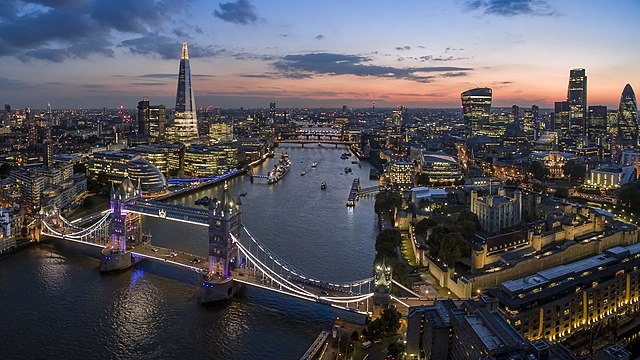A primate city is a city that is the largest in its country, province, state, or region, and disproportionately larger than any others in the urban hierarchy. A primate city distribution is a rank-size distribution that has one very large city with many much smaller cities and towns and no intermediate-sized urban centers, creating a statistical king effect.
Tallinn, the primate city of Estonia; it is five times larger than Tartu, the country's second-largest settlement.
A global city, also known as a power city, world city, alpha city, or world center, is a city that serves as a primary node in the global economic network. The concept originates from geography and urban studies, based on the thesis that globalization has created a hierarchy of strategic geographic locations with varying degrees of influence over finance, trade, and culture worldwide. The global city represents the most complex and significant hub within the international system, characterized by links binding it to other cities that have direct, tangible effects on global socioeconomic affairs.
New York City (top) and London (bottom) are the only two cities ranked in the Alpha ++ category by the Globalization and World Cities Research Network. Both cities are considered leading financial, commercial and cultural centers.
Manhattan, the core area of New York City, an Alpha++ global city, where there are several characteristic elements of global cities like worldwide influential economic (New York Stock Exchange) and cultural (Broadway) centers, headquarters of international political organizations (UN headquarters), world renowned museums (the Met Museum, MOMA, Guggenheim Museum), and worldwide-known landmarks (Times Square, Empire State Building, Central Park)
Image: View of Empire State Building from Rockefeller Center New York City dllu (cropped)




